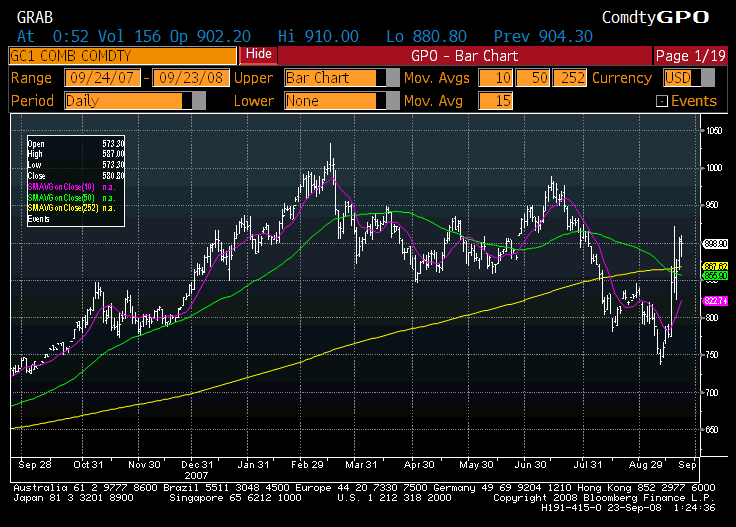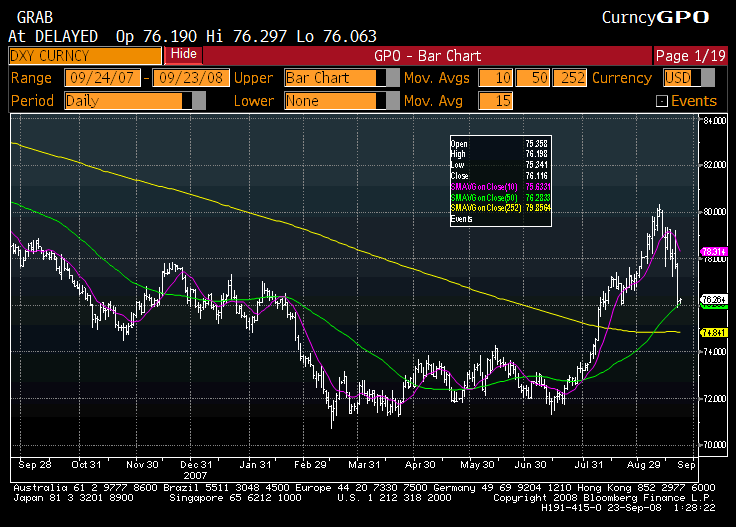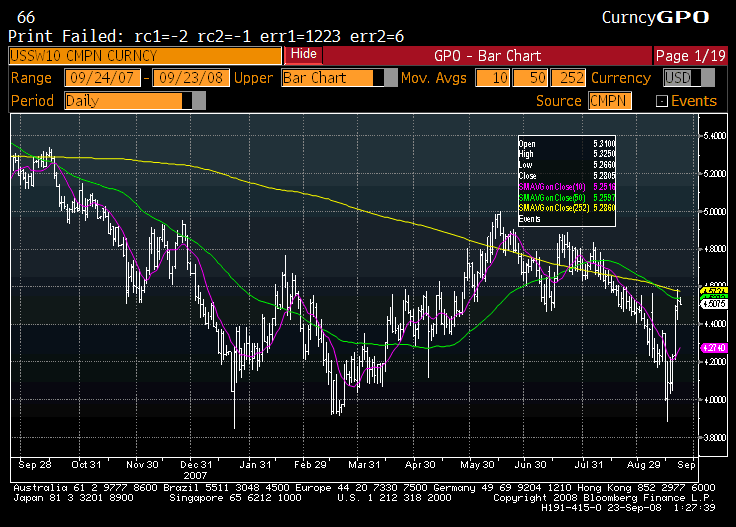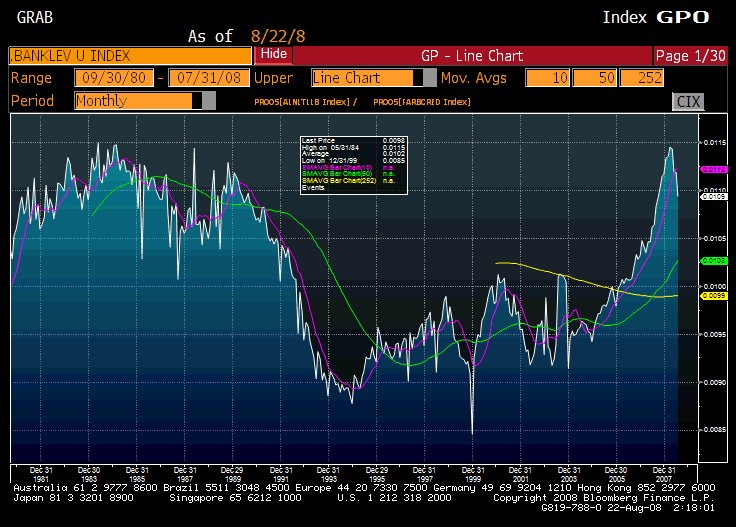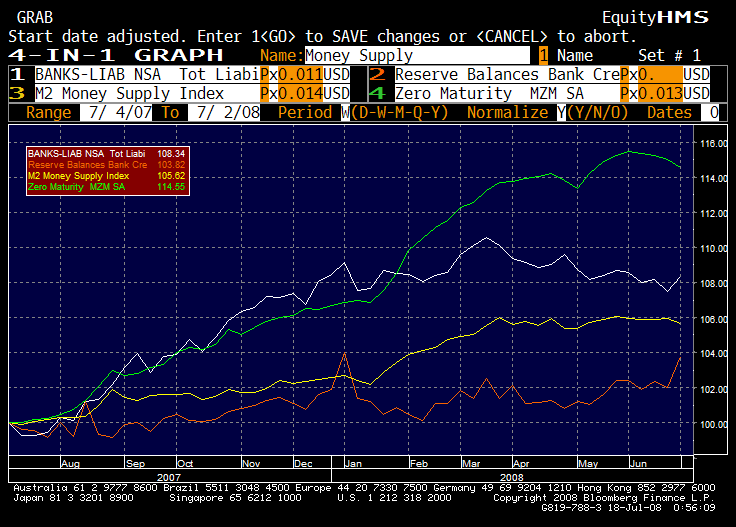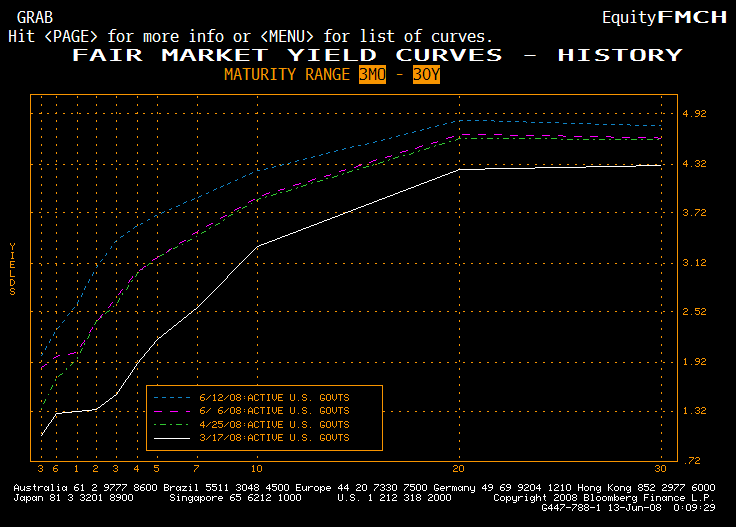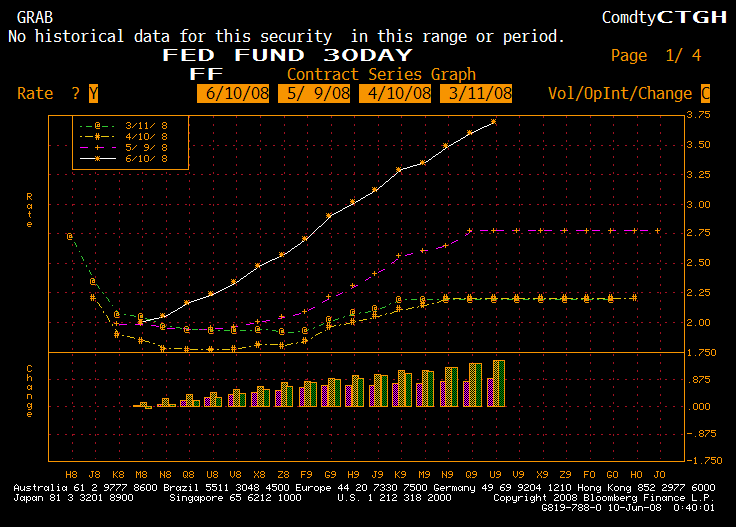Today’s FOMC meeting is largely a done deal.? No moves, but sound hawkish.? Personally, if I were in their shoes, I would move the Fed Funds target to 2.05%, just enough to weird the markets out, but not enough to do any real damage to those who rely on Fed Funds.? Creating uncertainty through breaking the convention on quarter percent moves would be good for the market, because market players have gained a false confidence over what the Fed can and can’t do.
The thing is, the Fed is boxed in, like many other central banks.? A combination of rising consumer prices, rising unemployment, and a weak financial sector will compel them to stay on the sidelines for now.
Now, as for Saturday’s post, I received a number of responses asking me to explain my views.? Here goes:
1) I’m not a gold bug; I have no investments in gold, or metals generally at present.? Any liking that I have for a gold standard is that it gets the government out of the business of manipulating the economy through manipulating the money supply.? Currency boards, pushed by my old professor, Dr. Steven Hanke, are another good idea.
2) Where am I on inflation/deflation?? We are experiencing goods and services price inflation, asset deflation, and a monetary system where the Fed is not increasing the monetary base, but the banks are expanding their liability structures over the last year, but that may have finally peaked.? Consider this graph:

There is a limit to how large the liabilities of the banking system can get relative to the Fed’s stock of high-powered money.? We reached that limit in the first four months of 2008, and now banks seem to be focusing on survival.
It is very hard to reflate bubbles — you can’t build an economy on sectors that are credit impaired, which makes me think that the housing stimulus ideas will likely fail.
3) The Fed is in a box.? They have no good policy options now.? They are stuck between rising (or at least high) inflation, rising unemployment, and the banks are not strong.? Fortunately the US Dollar has been showing a little more strength, but that’s probably anticipating the hawkish tone of today’s announcement.? If the statement is insufficiently hawkish, I would expect the US Dollar to weaken.
4) I expect goods inflation to persist in a moderate way over the intermediate-term, unless the main US Dollar pegs are broken (Gulf States, China).? Presently, we import a little of the inflation that the rest of the world is experiencing mainly through energy, and energy related commodities, like fertilizer.
5) Globalization does restrain wage growth on the low end.? On the high end, it is likely a benefit, and in the middle, probably neutral.? Those who benefit the most are those who are able to use relatively cheap labor for unskilled tasks.? But technological change also affects job prospects in different industries.? My view on steel is that the industry shrank mainly due to technological improvements at the lower cost mini-mills.
6) As for the GSEs, banks, and the investment banks, the Fed would be challenged to raise rates much.? At present, the positively sloped yield curve is allowing some banks to repair by borrowing short and lending long.? That is a good trade for now, but will be prone to trouble if the Fed ever concludes that it has to shift to fighting inflation, and not just put on a rhetorical show.
7) Finally, we have some degree of restiveness among the hawks on the FOMC.? I would expect two (or so) dissents favoring tightening today, but now with the current cast of ten (counting Elizabeth Duke, a banker), but if we get four, which is not impossible, I think it would unnerve the markets.? Mishkin is leaving at the end of August, and the custom is that he attends but does not vote at his last meeting.? (For more on FOMC dissents, I have this article.)
Well, let’s see what the FOMC has to say.? After all, at present, they are all talk.



